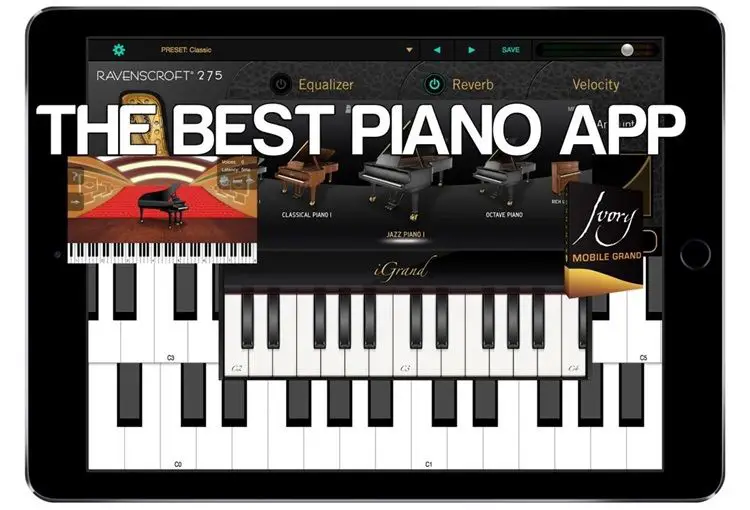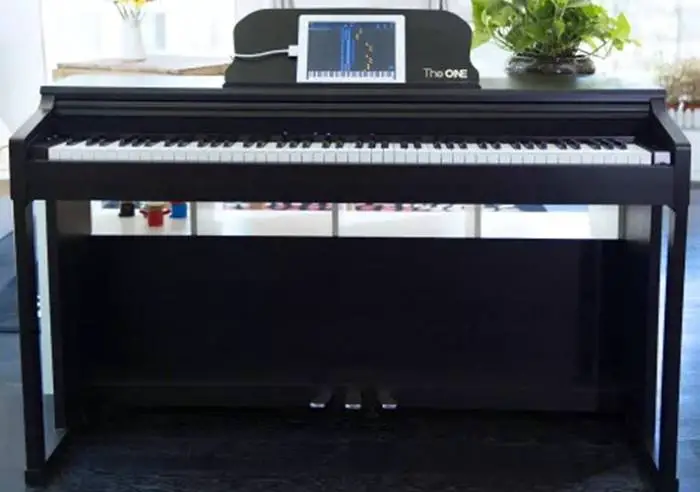
Digital pianos are getting smarter, it comes with built-in lessons, guided lights, and most even provide you with an app that has features to help you learn?
So does all these feature really help you learn to play the piano?
Well, there are several ways of looking at this question.
Learning to play a musical instrument takes time, and many students do not have the time to go to a music teacher for lessons (it turns out a bit expensive too). So its great if the digital piano offers features that can help you play.
However, the problem is that most beginners will not learn the basics of music theory using these instruments.
Most of them will try to learn the several built-in songs using the features provided. After all, every beginner wants to be able to learn to play songs as soon as possible.
The apps, guided lights makes it easy to do so. They just break the song into smaller pieces, spits the left and right hand part, waits for you to play the right notes and then moves ahead.
So after a few iteration, you will be ale to play a few simple songs.

And Hurrah! You can now play the piano.
But can you really play the piano?
So yes, the advantage of such smart/lighted piano/keyboards is that it makes you believe that you can play the piano, it removes the fear.
However, sooner or later you are again going to hit a wall.
Because this learning is like rote learning, you’re learning something by repetition, by memory.
Most of these apps include a list of songs that are displayed as sheet music. Hey, but you haven’t learned how to read sheet music?
Its okay to learn a few songs initially but you should ideally also learn the theory behind it – how to maintain proper time, know to use the various chords, and so on. You should also train your ears so that you can hear any song and be able to play the piano.
Well, only then you can say that you know to play the piano. Isn’t it?
But is this the flaw of the smart keyboard?
Definitely not!
Read more on lighted keyboards/pianos
Because these are add-on features that you get on a digital piano. The primary purpose of a digital piano is to serve as an instrument for learning, practicing and performing.
Until now, the learning process has always been a separate thing, and not an integrated part of the piano.
However, more and more piano manufacturers are trying to do that (integrate learning resource in the piano) by introducing smart pianos.
But as mentioned, these learning features are still very basic and not structured, and will have to be lot more comprehensive in order to provide real, long-term value.
And that could even perhaps increase the price of the piano. Or may be not!
A digital piano costing around $1500 can definitely provide a comprehensive learning package (most popular learning programs cost around 100 dollars).
So I guess keyboards like the One smart piano should serious consider this aspect, taking a long-term view.
Besides, its a great way of differentiating itself from the competition. Almost every decent piano/keyboard gives hundreds of sounds, styles, better connectivity, but the built-in piano lessons are not very extensive.
So perhaps that is one area area where digital pianos will improve in the future. And they have already a come long way.

Irrespective, if you want to really learn to play the piano, you will need to understand music theory and a whole lot more.
And it takes time, so you need to be patient. That is where you will need the help of an experienced teacher or you may use a comprehensive learn-at-home piano program to get started.
Also read: Best piano learning software reviewed.
KeytarHQ editorial team includes musicians who write and review products for pianists, keyboardists, guitarists & other musicians. KeytarHQ is the best online resource for information on keyboards, pianos, synths, keytars, guitars and music gear for musicians of all abilities, ages and interests.



Leave a Reply